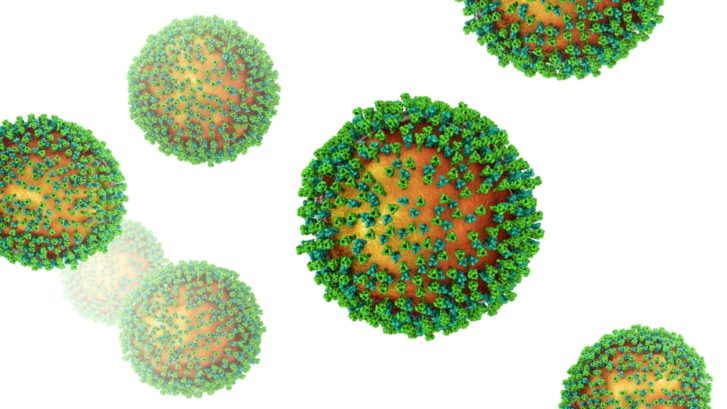Norovirus: What You Should Know
Our concierge family practice doctors at MD 2.0 in Jupiter are used to hearing reports of norovirus outbreaks, but it seems that lately there have been more than the usual number:
- Last month Grand Junction, Colorado, shut down an entire school district of 22,000 students because the norovirus had sickened so many students and teachers.
- Also in Colorado, the Air Force Academy was forced to close when 400 cadets—about 10 percent of the student body—became ill with the norovirus.
- And late last month the cruise ship Norwegian Joy, on a 16-day cruise from Florida, was hit by a norovirus outbreak that caused hundreds of passengers to become “acutely ill,” according to one passenger’s tweet.
Although present all year long, norovirus outbreaks are especially prevalent in the winter months, mainly from November to April.
What is norovirus?
Often called “stomach flu,” norovirus is not really related to the influenza virus but is a debilitating viral infection, nevertheless.
Norovirus causes inflammation (acute gastroenteritis) of the stomach or intestines or both. The most common symptoms include severe diarrhea and vomiting, stomach pain, fever, chills, headache, and body aches. The frequent vomiting and diarrhea can lead to dehydration, which in turn triggers the additional symptoms of a decrease in urination, dry mouth and throat, and dizziness on standing. Another common marker for norovirus is the rapidity of onset; the patient can be feeling fine one minute and sick the next.
Although not usually deadly, the Centers for Disease Control and Prevention (CDC) estimates that the virus causes between 19 million and 21 million cases in the United States every year, leading to 56,000-71,000 hospitalizations and nearly 800 deaths annually, mainly in young children and the elderly.
The norovirus can also be responsible for food poisoning. The CDC says it is the leading cause of illness and outbreaks from contaminated food in the U.S.
Extremely contagious
The reason norovirus is so feared—besides the misery it causes the patient—is because it is highly contagious and extremely difficult to eradicate. The virus can be found in the stool of infected individuals as long as two weeks after recovery, as well as on contaminated surfaces for up to two weeks.
It spreads easily in such closed environments as hospitals, schools, restaurants and cruise ships because the violent vomiting that is one of its hallmarks is thought to release at least a million particles of the virus into the atmosphere, which then settles everywhere in the immediate environment.
Note that in all the most recent outbreaks cited above, the common factor was a relatively closed environment in which people had repeated contact with each other. But that doesn’t mean you can’t pick it up at the store or at church or at friends’ homes.
According to the CDC, the number of virus particles that fit on the head of a pin is enough to infect 1,000 people, and victims can shed billions of particles throughout the course of their illness. But it takes only a few particles to infect others.
Also, once in place, it is very difficult to remove, which is why the institutions above were forced to shut down for weeks to allow for thorough and complete sanitation of the environment.
What can you do?
To protect yourself and your family, the CDC recommends the following:
- Wash your hands carefully and thoroughly with soap and hot water often throughout the day, especially after using the toilet and changing diapers, and always before eating, preparing, or handling food. Do not depend on hand sanitizers or wipes; it takes at least 30 seconds of vigorous hand washing (including under the nails) with soap and hot water to eradicate the virus.
- Wash fruits and vegetables before eating them, and be sure to cook oysters and shellfish thoroughly: the quick steaming process frequently used to cook shellfish often isn’t sufficient, as the virus can withstand temperatures as high as 140° F.
- Do not prepare food for others while you are experiencing symptoms and for at least two days after your symptoms subside. If you are sick, stay home.
- Use a chlorine bleach solution of 25 tablespoons of bleach per gallon of water to clean contaminated surfaces, or use another disinfectant registered by the Environmental Protection Agency (EPA) as effective against norovirus (check the product’s label).
- Immediately remove and wash clothing or bed linens that may be contaminated with vomit or feces in hot water on the longest-available cycle length and machine-dry on the hottest setting. Wear disposable gloves while handling such items and wash your hands afterward.
The norovirus usually runs its course in one to three days. If you catch it, it is important to stay in bed until fully recovered and drink plenty of water and fruit juices to allay dehydration. If your symptoms are especially severe, or if you have any concerns regarding possible complications, please let us know.
One final word: Remember that antibiotics do not work against viruses, including the norovirus.

